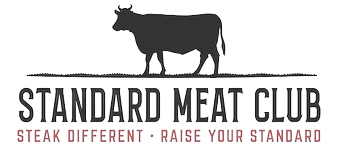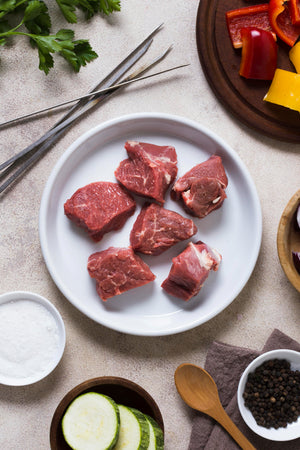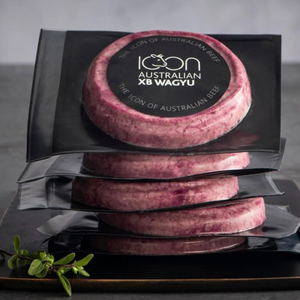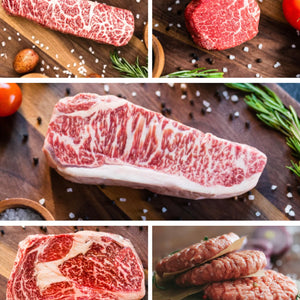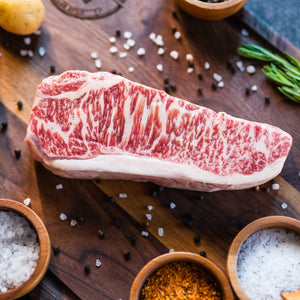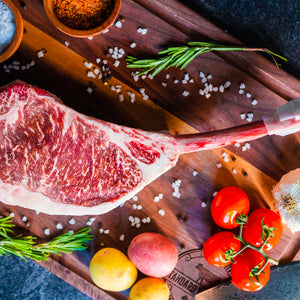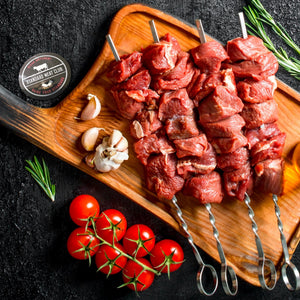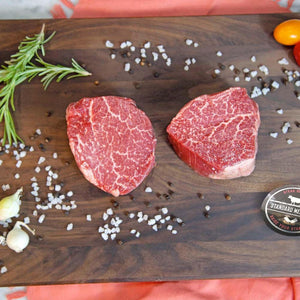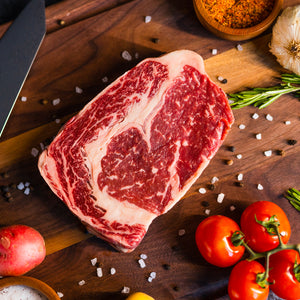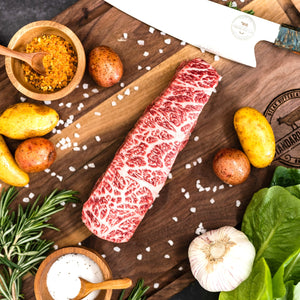USDA Prime vs Australian Wagyu: A Steak Lover's Ultimate Guide
Sep 27, 2024
If you're a steak enthusiast or a culinary adventurer, you've likely encountered terms like USDA Prime and Australian Wagyu on upscale restaurant menus or at premium butcher shops. These labels aren't just marketing jargon; they represent some of the highest quality beef available globally. Understanding the nuances between these two can elevate your dining experience and help you make informed choices whether you're ordering at a restaurant or selecting cuts for a home-cooked feast.
In this comprehensive guide, we'll delve deep into the world of premium beef, exploring the origins, grading systems, characteristics, and culinary applications of USDA Prime and Australian Wagyu. By the end, you'll not only know what sets these two apart but also how to choose the one that best suits your palate and occasion.
Understanding Beef Grading Systems
Grading systems play a crucial role in the beef industry, serving as a standardized method to assess and communicate the quality of meat to consumers and retailers. These systems evaluate various factors such as marbling, age, color, and texture to classify beef into different quality categories. Understanding these grading systems is essential for making informed purchasing decisions.
USDA Grading Explained
The United States Department of Agriculture (USDA) oversees the beef grading system in the United States. The grading is voluntary and conducted by USDA-licensed inspectors who are independent of the packing industry.
Key Factors in USDA Grading:
- Marbling (Intramuscular Fat): The amount and distribution of fat within the muscle, which affects juiciness and flavor.
- Maturity: Age of the animal at slaughter, with younger cattle generally producing more tender meat.
- Color and Texture: Bright cherry-red color and fine muscle fibers are preferred.
USDA Beef Grades:
- USDA Prime: Represents approximately the top 2-3% of beef in terms of quality. It has abundant marbling and is primarily sold in high-end restaurants and specialty meat markets.
- USDA Choice: High quality but has less marbling than Prime. Widely available in supermarkets.
- USDA Select: Leaner than Choice and Prime, with less marbling and tenderness.
Other grades include Standard, Commercial, Utility, Cutter, and Canner, which are generally not sold at the retail level.
Australian Grading Explained
Australia employs a different grading system, primarily the Meat Standards Australia (MSA) and the Aus-Meat grading systems. These systems are designed to predict the eating quality of beef for consumers.
Key Factors in Australian Grading:
- Marbling Score: Assessed on a scale, often from MB 1 to MB 9+, indicating the amount of intramuscular fat.
- Meat Color: Preferred is a bright cherry-red color.
- Fat Color: Creamy-white fat is ideal.
- pH Levels: Affect meat tenderness and shelf life.
- Aging Process: Duration of aging can influence tenderness and flavor.
Australian Wagyu Grading:
Australian Wagyu beef often uses the Aus-Meat marbling scores, which can go beyond MB 9, reaching up to MB 12 in exceptional cases. This scale allows for a more nuanced assessment of marbling compared to the USDA system.
Comparing the Systems:
While both grading systems evaluate marbling and other quality factors, the scales and criteria differ. Australian grading tends to provide a more detailed assessment of marbling, especially important for Wagyu beef known for its exceptional intramuscular fat.
What is USDA Prime Beef?
USDA Prime is the highest grade awarded by the USDA and signifies superior quality beef with exceptional marbling and tenderness. It's the gold standard for steak lovers seeking a traditional beef experience.
History and Origin
The USDA grading system was established in the early 1920s to standardize meat quality across the United States. The "Prime" grade was designated to identify beef with the highest level of marbling and youngest maturity, ensuring the best possible eating experience.
Breeds Used
USDA Prime beef primarily comes from well-known breeds such as:
- Angus: Renowned for marbling and flavor.
- Hereford: Known for tenderness and adaptability.
- Charolais: Valued for size and lean meat production.
These breeds are often crossbred to enhance desirable traits like marbling and growth efficiency.
Production Methods
Feeding Regimen:
- Grain-Fed: Most USDA Prime cattle are finished on a grain-based diet, typically corn, for 100-200 days. This diet promotes marbling and enhances flavor.
- Pasture-Raised: Some producers offer pasture-raised Prime beef, but achieving Prime grade on a grass diet is more challenging due to lower caloric intake.
Animal Husbandry:
- Hormones and Antibiotics: Conventional Prime beef may use growth hormones and antibiotics to promote growth and prevent disease, although organic and hormone-free options are available.
- Animal Welfare: Standards vary by producer, but there's a growing emphasis on humane practices and sustainability.
Processing:
- Aging: Prime beef is often aged, either wet-aged in vacuum-sealed bags or dry-aged in a controlled environment, to enhance tenderness and flavor.
What is Australian Wagyu Beef?
Australian Wagyu comes from cattle bred from Japanese Wagyu genetics. Australia is one of the largest producers of Wagyu beef outside Japan.
History and Origin
Introduction of Wagyu to Australia:
- Early 1990s: Australia began importing Wagyu genetics from Japan through semen and embryos due to strict live animal export restrictions from Japan.
- Breeding Programs: Australian breeders established full-blood Wagyu herds and crossbreeding programs with local cattle breeds to enhance marbling and adaptability.
Breeds and Genetics
Wagyu Varieties:
- Full-Blood Wagyu: Cattle with 100% pure Japanese Wagyu genetics.
- Crossbred Wagyu: Wagyu genetics crossed with other breeds like Angus to balance marbling with growth rates.
Genetic Traits:
- Marbling: Wagyu cattle possess a genetic predisposition for intense intramuscular fat deposition.
- Fat Composition: Higher levels of monounsaturated fats, contributing to the meat's melt-in-your-mouth texture.
Production Methods
Feeding Regimen:
- Long Feeding Periods: Wagyu cattle are often fed for 350-500 days on specialized grain diets to maximize marbling.
- Feed Composition: Diets may include rice straw, barley, and other grains to emulate Japanese feeding practices.
Animal Husbandry:
- Low-Stress Environment: Emphasis on minimizing stress to promote better meat quality.
- Animal Welfare: Australia has strict animal welfare regulations, and many Wagyu producers adhere to additional standards.
Processing:
- Aging Techniques: Similar to USDA Prime, Wagyu beef can be wet-aged or dry-aged to enhance its qualities.
- Halal Certification: Some Australian Wagyu beef is Halal-certified, expanding its market reach.
Grading:
- Marbling Scores (MB): Assessed on a scale from MB 1 to MB 9+, with higher numbers indicating more intense marbling.
- BMS (Beef Marbling Standard): Some producers use the Japanese Beef Marbling Standard for even more precise grading.
Marbling and Flavor Profile
Marbling, or intramuscular fat, is a critical factor influencing the flavor, tenderness, and juiciness of beef. Both USDA Prime and Australian Wagyu are celebrated for their high levels of marbling, but there are differences in the type and extent of marbling between them.
Science of Marbling
What is Marbling?
- Definition: The white flecks or streaks of fat within the lean sections of meat.
- Composition: Mainly composed of monounsaturated fats, which have a lower melting point.
Factors Influencing Marbling:
- Genetics: Certain breeds, like Wagyu, have a genetic predisposition for higher marbling.
- Diet: High-energy diets promote fat deposition within muscles.
- Age and Maturity: Younger animals generally have better marbling potential.
Impact on Flavor and Texture
USDA Prime Marbling:
- Marbling Level: High but generally less than top-grade Wagyu.
- Flavor Profile: Rich, beefy flavor with a balance of lean meat and fat.
- Texture: Tender with a noticeable bite, providing a traditional steak experience.
Australian Wagyu Marbling:
- Marbling Level: Exceptionally high, especially at MB 6-9+ levels.
- Flavor Profile: Rich, buttery, and umami-filled, with subtle sweet notes.
- Texture: Incredibly tender, often described as "melt-in-your-mouth" due to the fat melting at low temperatures.
Why Does Marbling Matter?
- Juiciness: Fat within the muscle fibers melts during cooking, keeping the meat moist.
- Flavor Enhancement: Fat carries flavor compounds and provides a satisfying mouthfeel.
- Cooking Versatility: Highly marbled meats can withstand higher cooking temperatures without drying out.
Health Aspects:
- Fat Composition: Wagyu fat is higher in monounsaturated fats and Omega-3 and Omega-6 fatty acids compared to conventional beef.
- Perception of Richness: Due to its richness, smaller portions of Wagyu are often sufficient.
Price Comparison
The cost of beef varies widely based on factors like quality, supply and demand, production costs, and market dynamics. USDA Prime and Australian Wagyu are premium products, and their prices reflect their quality and rarity.
Factors Affecting Price
USDA Prime:
- Supply: Represents only the top 2-3% of U.S. beef production.
- Demand: High demand in fine dining and among discerning consumers.
- Production Costs: Higher due to specialized feeding regimens and longer finishing periods.
Australian Wagyu:
- Genetic Investment: Importing and maintaining Wagyu genetics is expensive.
- Feeding Periods: Longer feeding times (up to 500 days) increase costs.
- Limited Supply: Less abundant than USDA Prime, especially for higher marbling scores.
- Export Costs: Shipping and regulatory compliance add to the final price.
Market Availability
USDA Prime:
- Accessibility: More widely available in the U.S., found in upscale supermarkets, butcher shops, and restaurants.
- Price Range: Prices can vary but generally range from $20 to $40 per pound, depending on the cut and region.
Australian Wagyu:
- Accessibility: Available through specialty meat retailers, high-end restaurants, and online vendors.
- Price Range: Can range from $50 to over $200 per pound for top-grade cuts with high marbling scores.
- Variations: Crossbred Wagyu (F1-F4) may be more affordable than full-blood Wagyu.
Value Consideration:
- Occasion: Wagyu is often reserved for special occasions due to its price and richness.
- Portion Size: Smaller portions are typical with Wagyu, which can mitigate the cost per serving.
Cooking Techniques
Cooking premium beef requires attention to detail to maximize its qualities. The high marbling in USDA Prime and Australian Wagyu demands specific techniques to bring out their best flavors and textures.
Best Practices for USDA Prime
Ideal Cooking Methods:
- Grilling: High heat sears the outside, locking in juices.
- Broiling: Direct radiant heat cooks the meat evenly.
- Pan-Searing: Creates a flavorful crust when done in a hot skillet.
Preparation Tips:
- Bring to Room Temperature: Let the steak rest at room temperature for 30 minutes before cooking.
- Seasoning: Simple seasoning with kosher salt and freshly ground black pepper enhances natural flavors.
- Oil: Lightly oil the meat, not the pan, to prevent sticking.
Cooking Recommendations:
- Doneness Level: Best enjoyed at medium-rare (130°F/54°C) to medium (140°F/60°C) to appreciate the marbling without overcooking.
- Resting Time: Allow the meat to rest for 5-10 minutes post-cooking to redistribute juices.
Additional Tips:
- Reverse Searing: Start by cooking the steak at a low temperature and finish with a high-heat sear for an even cook.
- Smoking: For added flavor, consider smoking the beef before finishing with a sear.
Best Practices for Australian Wagyu
Ideal Cooking Methods:
- Quick Searing: High heat for a short duration to prevent excessive fat rendering.
- Teppanyaki Style: Cooking on a flat, hot iron surface, as done in Japanese cuisine.
- Sous Vide: Controlled cooking ensures even doneness without overcooking the fat.
Preparation Tips:
- Thin Slices: Consider cutting the meat into thin slices to cook quickly and evenly.
- Minimal Seasoning: The meat's natural flavor is rich; light seasoning is sufficient.
- No Oil Needed: The high fat content means additional oil is unnecessary.
Cooking Recommendations:
- Doneness Level: Best enjoyed rare (125°F/52°C) to medium-rare to maintain tenderness and prevent melting too much fat.
- Portion Control: Due to its richness, smaller portions (3-4 ounces per person) are adequate.
Additional Tips:
- Resting Time: A brief resting period of 2-3 minutes is sufficient.
- Serving Suggestions: Pair with simple sides like steamed vegetables or plain rice to balance the richness.
Safety Note:
- Avoid Overcooking: Overcooking Wagyu can result in a greasy texture and loss of its signature qualities.
- Temperature Control: Use a meat thermometer to ensure precise cooking.
Health Considerations
While indulgence in premium beef is a delight for the palate, it's important to consider the nutritional aspects and how they fit into a balanced diet.
Nutritional Differences
USDA Prime:
- Calories: Approximately 250-350 calories per 4-ounce serving, depending on the cut.
- Fat Content: Higher in saturated fats due to marbling.
- Protein: Rich source of high-quality protein (~22-25 grams per serving).
- Micronutrients: Good source of iron, zinc, B vitamins, and selenium.
Australian Wagyu:
- Calories: Slightly higher, around 300-400 calories per 4-ounce serving.
-
Fat Content: Higher total fat content, but with a different fatty acid profile.
- Monounsaturated Fats: Higher levels, which can have positive effects on cholesterol levels.
- Omega-3 and Omega-6 Fatty Acids: Present in higher amounts compared to conventional beef.
- Protein: Similar protein content to USDA Prime.
- Micronutrients: Comparable levels of essential vitamins and minerals.
Dietary Impact
Benefits:
- Heart Health: The higher monounsaturated fat content in Wagyu may contribute to better heart health when consumed in moderation.
- Satiety: High-fat content can promote a feeling of fullness, potentially leading to lower overall caloric intake.
Considerations:
- Saturated Fats: Both types are high in saturated fats, which should be consumed in moderation according to dietary guidelines.
- Caloric Density: Due to higher fat content, both are calorie-dense, which is a consideration for weight management.
- Portion Sizes: Smaller portions are advisable, especially with Wagyu, to keep fat and calorie intake within recommended limits.
Dietary Recommendations:
- Balance: Incorporate these premium meats as part of a balanced diet rich in fruits, vegetables, whole grains, and lean proteins.
- Frequency: Reserve for special occasions rather than daily consumption.
- Consultation: Individuals with specific health conditions should consult healthcare professionals regarding dietary choices.
Which One Should You Choose?
Selecting between USDA Prime and Australian Wagyu depends on various factors, including the occasion, your budget, and personal taste preferences.
Occasion and Purpose
USDA Prime:
- Everyday Luxury: Suitable for special family dinners, gatherings, or when you want a high-quality steak without extreme cost.
- Cooking for a Crowd: More economical for serving multiple guests while still providing a premium experience.
- Versatile Cuts: Available in a wide range of cuts suitable for grilling, roasting, or broiling.
Australian Wagyu:
- Special Celebrations: Ideal for milestone events, anniversaries, or when you want to impress guests with an extraordinary meal.
- Culinary Exploration: Perfect for food enthusiasts eager to experience the pinnacle of beef marbling and flavor.
- Gourmet Dishes: Suitable for dishes that highlight the meat's qualities, such as carpaccio or tataki.
Personal Taste Preferences
Choose USDA Prime If:
- Flavor Profile: You prefer a robust, traditional beef flavor with a balance of lean meat and fat.
- Texture: You enjoy a tender steak that still offers some chew and bite.
- Portion Size: You prefer standard steak sizes (6-12 ounces).
Choose Australian Wagyu If:
- Flavor Profile: You desire a rich, buttery taste with complex umami notes.
- Texture: You appreciate extremely tender meat that melts in your mouth.
- Portion Size: You're satisfied with smaller portions due to the meat's richness.
Budget Considerations:
- USDA Prime: More budget-friendly for frequent indulgence.
- Australian Wagyu: A higher investment, best reserved for times when the experience justifies the cost.
Ethical and Environmental Factors:
- USDA Prime: Look for producers that prioritize sustainable and humane farming practices if this is important to you.
- Australian Wagyu: Similarly, seek out suppliers who adhere to high animal welfare standards.
Availability:
- USDA Prime: Easier to find in local markets and restaurants.
- Australian Wagyu: May require purchasing from specialty retailers or ordering in advance.
Conclusion
Both USDA Prime and Australian Wagyu represent the pinnacle of beef quality in their respective categories, offering unique experiences for the discerning palate.
USDA Prime provides a classic steak experience with abundant marbling that enhances flavor and tenderness without overwhelming the senses. It's versatile, more readily available, and suitable for a variety of occasions, from casual gatherings to celebratory meals.
Australian Wagyu, on the other hand, offers an unparalleled richness and a melt-in-your-mouth texture that elevates dining to an extraordinary level. Its exceptional marbling and distinctive flavor profile make it a gourmet choice, perfect for special occasions and those seeking a truly luxurious culinary adventure.
In making your choice, consider factors such as the desired flavor and texture, occasion, budget, and personal dietary preferences. Whichever you choose, both options promise a memorable dining experience that celebrates the finest qualities of beef.
Frequently Asked Questions
Is Australian Wagyu better than USDA Prime?
Answer:
"Better" is subjective and depends on personal preferences. Australian Wagyu offers more intense marbling and a richer, buttery flavor profile due to its higher fat content. It's ideal for those seeking an indulgent, melt-in-your-mouth experience. USDA Prime provides a traditional beef flavor with excellent marbling, offering a balance of tenderness and a satisfying chew. It appeals to those who prefer a classic steak experience.
How should I store premium beef?
Answer:
Proper storage is crucial to maintain the quality of premium beef:
- Refrigeration: Store in the coldest part of the refrigerator at temperatures between 32°F to 36°F (0°C to 2°C). Keep the meat in its original packaging if vacuum-sealed, or wrap it tightly in plastic wrap and place it in a sealed container.
- Duration: Consume refrigerated beef within 3-5 days for optimal freshness.
- Freezing: For longer storage, freeze the beef. Wrap it tightly in freezer paper or heavy-duty aluminum foil, or use freezer bags to prevent freezer burn.
- Freezing Duration: USDA Prime can be frozen for up to 6-12 months, while Wagyu, due to its high fat content, is best used within 6 months.
- Thawing: Thaw frozen beef slowly in the refrigerator for 24-48 hours before cooking to preserve texture and juiciness.
What are the cooking temperatures for different levels of doneness?
Answer:
Using a meat thermometer ensures accurate doneness levels:
- Rare: 120°F to 125°F (49°C to 52°C) - Cool red center.
- Medium-Rare: 130°F to 135°F (54°C to 57°C) - Warm red center.
- Medium: 140°F to 145°F (60°C to 63°C) - Warm pink center.
- Medium-Well: 150°F to 155°F (66°C to 68°C) - Slightly pink center.
- Well-Done: 160°F and above (71°C and above) - Little to no pink.
For Wagyu, it's recommended not to cook beyond medium-rare to preserve its delicate fat structure and tenderness.
Are there ethical considerations when choosing between USDA Prime and Australian Wagyu?
Answer:
Yes, ethical considerations may influence your choice:
- Animal Welfare: Look for certifications or producer statements regarding humane treatment.
- Environmental Impact: Beef production has environmental implications. Some producers implement sustainable practices to reduce their carbon footprint.
- Hormone and Antibiotic Use: If concerned, opt for beef labeled as hormone-free or antibiotic-free.
Researching specific brands or farms can provide more insight into their practices.
Does Wagyu beef have health benefits over regular beef?
Answer:
Wagyu beef contains higher levels of monounsaturated fats and Omega-3 and Omega-6 fatty acids, which are considered beneficial for heart health when consumed in moderation. The fat in Wagyu is also lower in saturated fats compared to some other beef types. However, due to its high total fat content, it's important to consume Wagyu in smaller portions as part of a balanced diet.
